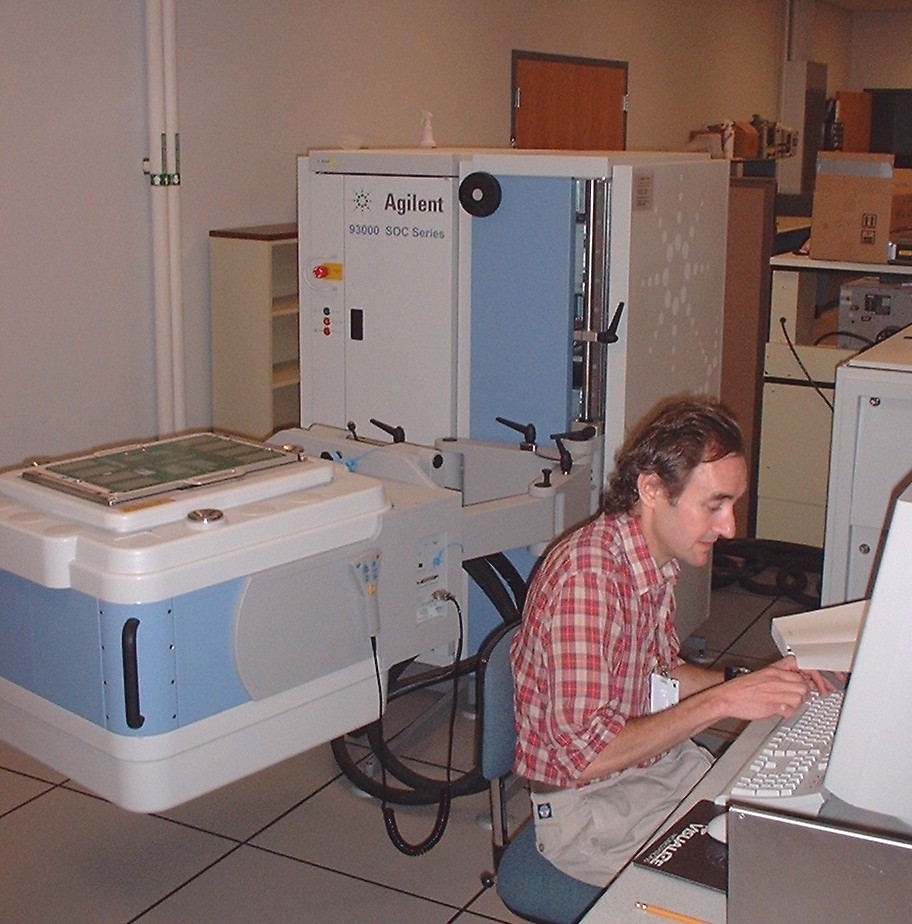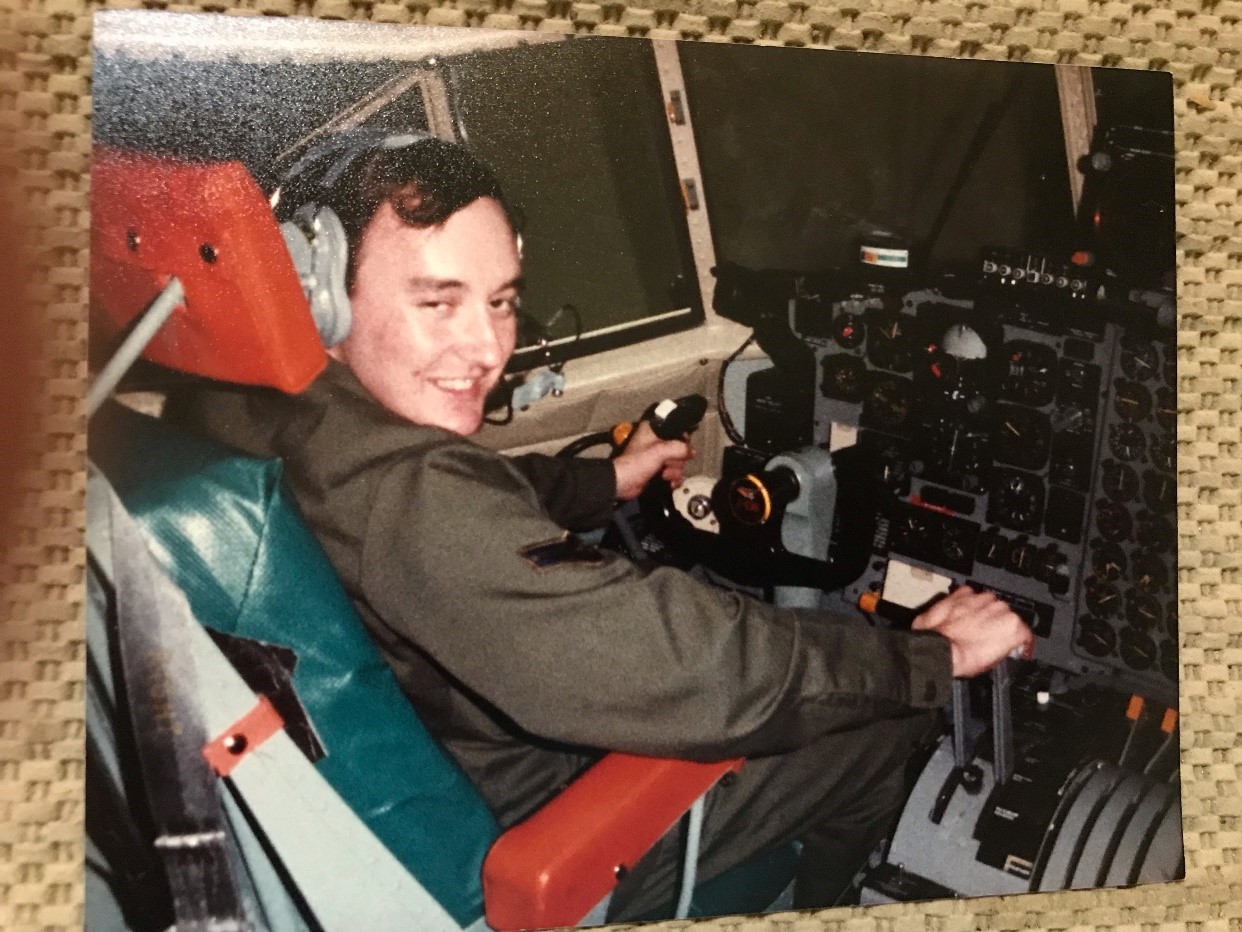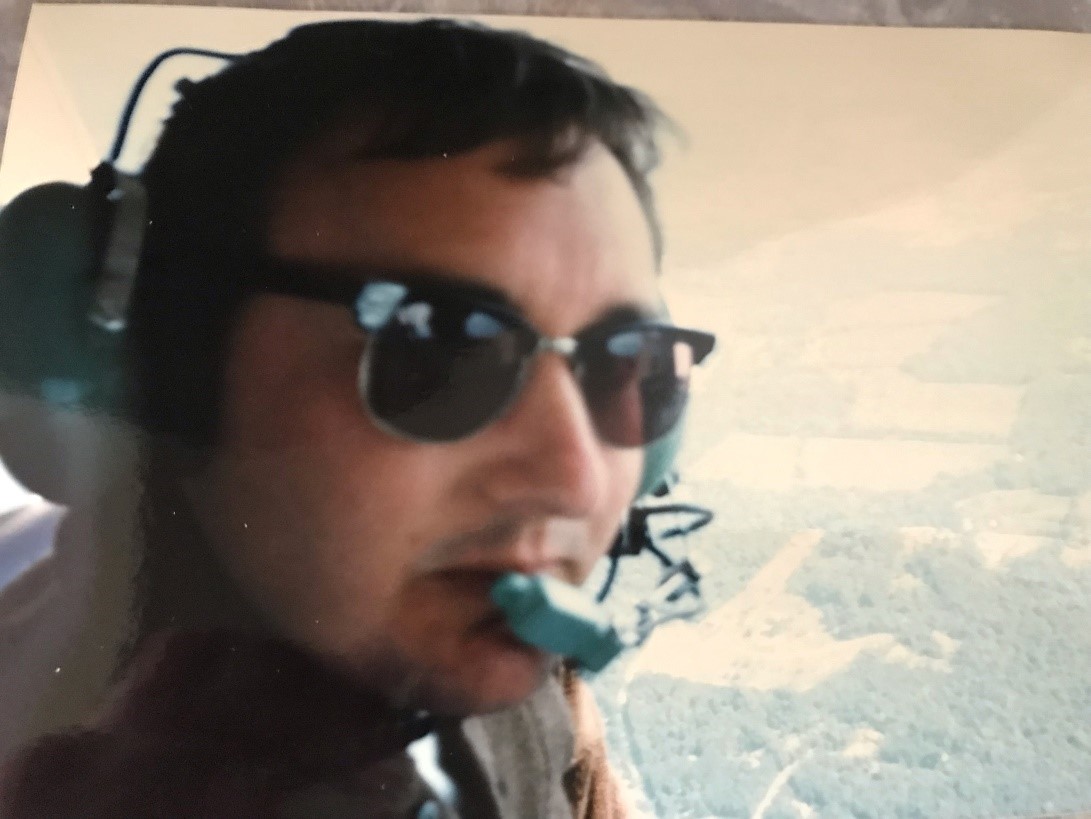CRANE, Ind. –
A Naval Surface Warfare Center, Crane Division (NSWC Crane) Senior Scientific Technical Manager (SSTM) was recently selected to serve as Acting Principal Director for Microelectronics within the Office of the Under Secretary of Defense for Research and Engineering Modernization. Brett Hamilton served in this role for two months this summer, but started his career at Crane as a scientist several years ago.

“At Crane doing actual lab work, I was instrumental in modernizing our microelectronics test capability at Crane.” Brett Hamilton
“I started in 2000 as a scientist doing technical work in the lab,” says Hamilton. “I gained experience on in microelectronics technology, and was drawn to the security aspect of hardware. As my experience grew, I became more involved in informing senior leaders on trust and assurance of microelectronics.”
It was in 2017 that Hamilton was promoted to the rank of SSTM and assumed the duties as the Department of the Navy’s Distinguished Scientist for Trusted Microelectronics. He also currently holds over ten patents in this field. Prior to being selected as the Principal Director, Hamilton served as the Deputy Principal Director for OUSD(R&E) MOD where he was responsible for programmatic and budgetary oversight of research development, testing, and evaluation (RDT&E) programs, and analysis related to microelectronics.
A Washington County, Indiana native, Hamilton began his career in the Air Force where he served in-uniform as a Digital Flight and Radar Simulator Specialist, followed by working for the Intelligence Community where he traveled worldwide during the Cold War. When the Cold War ended, he returned to Indiana spending a decade at Indiana University (IU)’s particle accelerator designing particle beam diagnostic instrumentation while pursuing a degree at IU.

“Air Force C-130 Flight simulator. 1983”
In 2007, Hamilton completed a six-month sabbatical at Sandia Labs to further develop his expertise in state-of-the-art (SOTA) microelectronics technology and security. Hamilton has testified before the House Armed Services Subcommittee about trusted and assured microelectronics, is a Professional Engineers in Government agency’s Engineer of the Year winner, and top ten nominee for 2014 Federal Engineer of the Year.
Hamilton says it is important to challenge yourself.
“Sometimes you have to step outside your comfort zone. For instance, in developing your confidence in speaking and giving presentations, the best way to get there is to start with smaller groups and ask for feedback. When I was 17 years old I hit a barbed wire fence at over 50mph on a motorcycle, and could have easily been killed, so when I get nervous I tell myself “I could be dead” which has a very calming effect, so find what works for you.”

“Intelligence community signals intelligence work. 1987”
Hamilton says microelectronics technology is critical to national security.
“This field of technology is central for Department of Defense modernization, which requires access to state-of-the-art microelectronics manufacturing,” says Hamilton. “Every Navy system requires microelectronics; they are a critical enabling technology. As the design and manufacturer of microelectronics has become a globalized industry, the challenge we face is access to, and assurance of, integrated circuits. It is related to the future tech you hear about: Artificial Intelligence, autonomy, 5G, and space-based applications. All of these technologies require more processing power.”

“Intelligence community signals intelligence work. 1987”
Hamilton says that continuously learning throughout your career is significant to professional development.
“Understand what you don’t know,” says Hamilton. “Surround yourself with subject matter experts you can rely on to provide solid technical information. You can say ‘I don’t know the answer, but I do know the subject matter expert you can talk to.’ When possible, find a mentor who you can ask advice.”
He says NSWC Crane has opportunities for those looking for a challenging and rewarding career.
“People realize there’s a lot of opportunities at NSWC Crane, including opportunities to take what you have learned and make an impact. It requires a lot of work and to take some risks, responsibility, and to stick your neck out, but if that is your career path, you can’t be afraid to lean forward. I have been enabled to do that here and broaden my career.”
About NSWC Crane
NSWC Crane is a naval laboratory and a field activity of Naval Sea Systems Command (NAVSEA) with mission areas in Expeditionary Warfare, Strategic Missions and Electronic Warfare. The warfare center is responsible for multi-domain, multi- spectral, full life cycle support of technologies and systems enhancing capability to today's Warfighter.